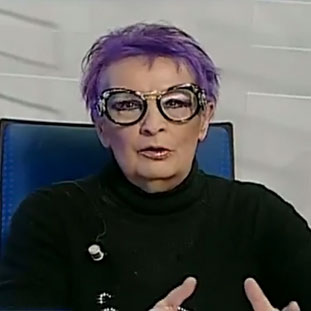![]()
1 October - 23 October 2016
28 May - 3 June 2017
“A people can best be known through their folk songs,” claimed Zoltán Kodály, one of the crucial proponents of Hungarian music, whose main ambition as a composer, collector of folk songs and music teacher was to inculcate a love for Hungarian folk song and to cultivate a knowledgeable audience.
The Spinning Room is the epitome of Kodály’s efforts. When the Opera commissioned a full-length version of the work from the composer in 1931, it wasn’t an opera that Kodály intended to write – instead his aim was to re-discover the Hungarian folk song and relay its simple dramatic power. Kodály was of Polish extraction on his mother’s side. And now, breaking with convention, audiences will get the chance to see through the eyes of a Polish director, Michał Znaniecki, how a foreign artist perceives this quintessentially Hungarian work.
„Here I am, coming from Poland, trying to create an exciting visual world for this music,” explained Znaniecki. „My first reaction was considering how far I could be from this piece in order to make it mine, how long it would take me reaching the core of this wonderful music. As I started my journey into it, I realized how much at home I felt, how really comfortable I was listening to it and how exciting it would be to show to the world the wonders of this piece. So I opened the door to this Spinning Room with total confidence and aware of the privilege I had been given. As it happened in Poland, the traditional folk music was after all one of the strongest assets linking people facing tumultuous challenges throughout history. But precisely because of that, because it comes from the true core of a community, because the heartbeat in it is so pure and strong, The Spinning Room becomes an universal experience as any member of the audience may feel the need to connect with the roots of the human experience.”
Znaniecki’s concept divides the plot in both space and time. In the darker, more simple foreground the story evolves chronologically, whereas in the background the scenes are more colourful, more tableaux-like. The Polish director examined the piece from several aspects: he searched for universal as well as typically Hungarian motifs. He also made studies of Hungarian folk art, traditions, costumes, and the life and works of Zoltán Kodály to be able to present a new, exciting interpretation that does not break away from the original concept of Kodály’s, but offers a new, European point of view on the eternal values of Hungarian culture.
In the first part of the evening, István „Szalonna” Pál and his Band’s dance house will get the audience tuned in and keyed up for the
Hungarian folk melodies.
Conductor: Balázs Kocsár
Director: Michał Znaniecki
Choreographer: Zsolt Juhász
Set designer: Luigi Scoglio
Costume designer: Magdalena Dabrowska
Animation and lighting designer: Bogumił Palewicz
Cast:
Atala Schöck / Erika Gál, Levente Molnár / Zsolt Haja, Adorján Pataki / Gergely Ujvári, Andrea Ulbrich / Bernadett Wiedemann, Andrea Rost / Rita Rácz, Zoltán Gradsach / Lajos Geiger, Erika Kiss
Premiere 1 October 2016, 7 p.m. | Opera House
Further dates 2, 6, 7, 8, 9, 11, 12, 23 October 2016 and 28 May, 3 June 2017
Hungarian State Opera
Andrássy út 22
H-1061 Budapest
Tel: +36 1 81 47 438
www.opera.hu
